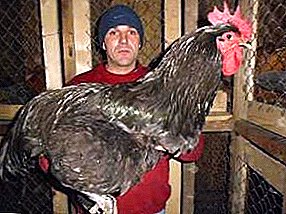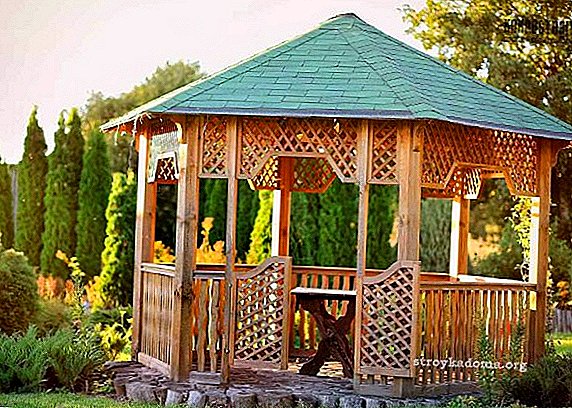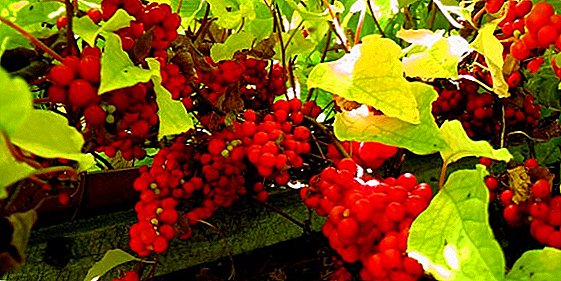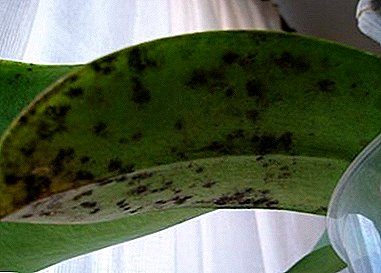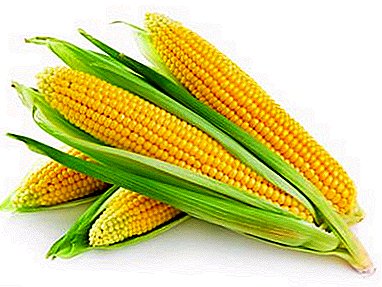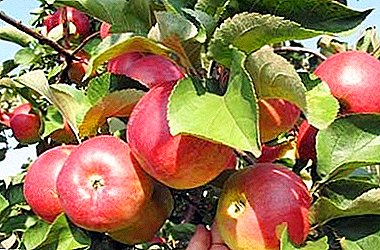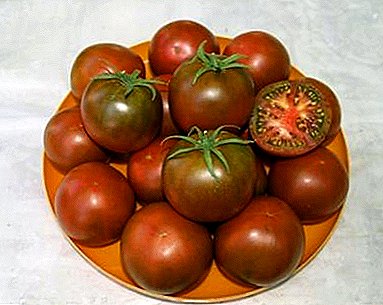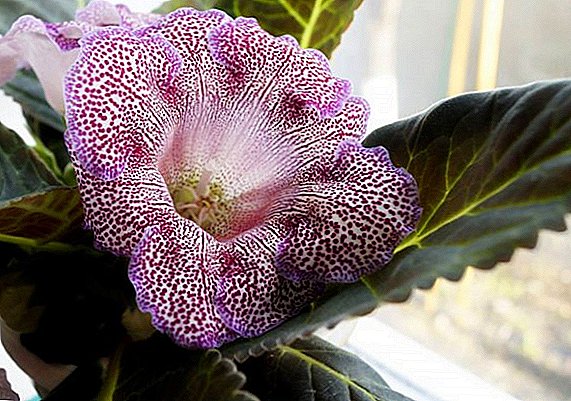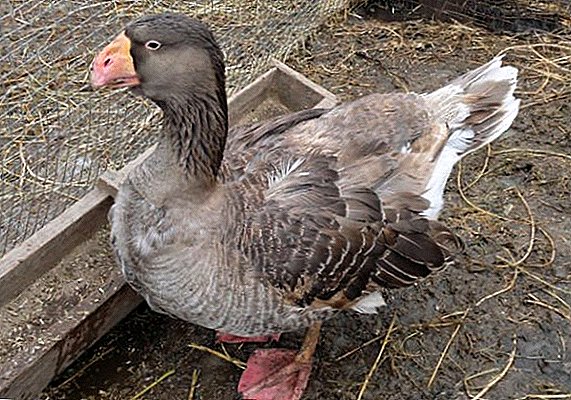 Among the many breeds of poultry, each owner wants to choose the most profitable option for himself, and this applies to both the quality of meat and the production of a sufficient number of eggs. Chickens, ducks, turkeys and geese in any case require attention to themselves, but in order to get a good income at minimal cost, you need to make the right choice. In this article, we will consider an unusual breed of geese, which, although they are bred for meat, were bred for a completely different purpose. What you need to know about Tula geese, how to maintain them and whether it is worth buying at all - let's understand.
Among the many breeds of poultry, each owner wants to choose the most profitable option for himself, and this applies to both the quality of meat and the production of a sufficient number of eggs. Chickens, ducks, turkeys and geese in any case require attention to themselves, but in order to get a good income at minimal cost, you need to make the right choice. In this article, we will consider an unusual breed of geese, which, although they are bred for meat, were bred for a completely different purpose. What you need to know about Tula geese, how to maintain them and whether it is worth buying at all - let's understand.
History of origin
There is no reliable data on the origin of the breed today, although many researchers or just connoisseurs of these strong birds consider them to be originally Russian birds, bred to entertain merchants at bird fights.  Presumably, the Tula geese appeared in the XVII century through the selection and further reproduction of the most ardent fighters with a bad, foolish character. Is it really so difficult to answer today, but it’s impossible to deny that birds are good at such competitions.
Presumably, the Tula geese appeared in the XVII century through the selection and further reproduction of the most ardent fighters with a bad, foolish character. Is it really so difficult to answer today, but it’s impossible to deny that birds are good at such competitions.
Did you know? In the "family" relationship, geese are like swans and choose a mate for life, and if one of the birds dies, the rest of the birds can survive the loss over the years. When breeding at home, one gander can cover several females at once, but one of them will always be more supportive.
Description and features of the breed
As always, when choosing a poultry one should pay attention to several main factors: appearance, character, productivity and ripening speed, which plays an important role in the case of the Tula fighters.
External data and color
The main distinguishing feature of the breed is an unusually curved beak, although geese can also be recognized by strong wings..
The shape of the nose allows you to conditionally divide the birds into several types: straight-bearing (practically without a hump) steep-nosed (head and beak are on the same line) and lazy (the concave upper part of the beak), but in any case, notches and humps on the nose are formed at the level of the skeletal system and directly affect the fighting qualities.
The rest of the Tula fighting geese are similar to many of their relatives of average size (weight - 5.5-6 kg): they have a dense and wide skeleton, rounded legs, broad and flat back, full and round chest. Wings that are not crossed at the ends are well developed, with sturdy shoulder muscles.  Head - almost rounded, with a broad forehead and well defined cheeks.
Head - almost rounded, with a broad forehead and well defined cheeks.
Eyes - large enough, can be both brown and blue. Holds the head a strong and relatively short neck, slightly curved in its upper part.
Plumage close to the body has several different shades: on the head, chest and neck, it is light brown in color, the lower part of the body and abdomen are white, the shoulders, the back and wings are brown, but they can be either darker or lighter, but without spots. Color only the upper part of the tail feathers.
It is also possible and more gray color, reminiscent of the color of the plumage of wild geese. In most cases, it shimmers with a black and blue tint, on which a thin white border is barely noticeable (especially on the tail).
Plumage in the zone of the abdomen and tail - white. Young representatives of the breed are distinguished by a brown-gray tint.
Character
The combat origin of these geese directly affects their character. These are extremely active and mobile birds, differing in bad temper (especially it concerns males).
Most often they are kept in small families, but even in this case, adults constantly find out the relationship with their relatives. Females are calmer, but they can also participate in fights, especially protecting their offspring.  With other domestic birds badly get on, because of what it is better to keep them separate.
With other domestic birds badly get on, because of what it is better to keep them separate.
It will be useful for you to learn how to breed geese at home, how to properly feed geese from the first days of life, and also why geese are sick and how to treat them.
Precocity
This breed has a very slow growth of birds, so if you are not a connoisseur, then it is better to find another option for breeding.
These "fighters" are fully formed by two years, although already at 60 days of age the mass of one representative can reach 4 kg. Sometimes fully formed individuals can weigh 6-8 kg.
Egg production
Nobody gets Tula fighting geese for the sake of getting eggs, because they have extremely low productivity in this regard.
For the year, one female lays only up to 25 eggs, however, their mass is quite impressive - up to 150 g each.
Maternal instinct
The females of the Tula fighting geese take great care of their offspring.
They are good mothers and beautiful hens, so the owner will not have problems with growing offspring: if there is enough food, by the age of two months the young will weigh about four kilograms. 
What you need to take care for successful breeding
Tula fighting geese are frivolous creatures and easily adapt to almost any conditions.
However, the better the process is organized, the better the end result of breeding will be, so it is worth considering some requirements for home improvement for birds, their walking and feeding.
Requirements for the room
If you are going to breed geese both in summer and in winter, then you will have to take care of building a good poultry house. "Tula fighters" are not afraid of frost, but do not tolerate drafts, so the shed must be appropriate. It doesn’t matter from which material you build it, the main thing is to seal all the gaps.
Read more about how to build a house on the summer cottage with your own hands.
It is good if the floor in the room is wooden and elevated by 0.2 m above the ground level, and the walls are plastered and whitewashed, which will contribute to additional heat preservation in winter.
In the corners of the barn you can scatter hay, as geese love to dig around in it. The roof of the house should be sloping, sloping to the rear of the building and covered with roofing material.
As for the specific size of the room, they are calculated based on the estimated number of birds: 1 goose should have at least 1 square meter. m floor. The windows in the building can be at any height, as long as the interior of the room is well lit by the sun's rays.  For additional insulation facilities in the winter, you can lay peat, straw, residues from the processing of sunflower or millet. With these materials, you can reduce the level of moisture in the house, resulting in pets will always be healthy.
For additional insulation facilities in the winter, you can lay peat, straw, residues from the processing of sunflower or millet. With these materials, you can reduce the level of moisture in the house, resulting in pets will always be healthy.
However, before laying the layer of litter (its thickness can reach 4-5 cm), the floor should be treated with lime-fluff, calculated to 1 kg per 1 sq. M. As the old litter is polluted, the new litter is replaced with a new one: about 1 time for 9-10 days.
Important! It is better to divide the entire internal space of the shed into two parts (not necessarily equal), so that in one place the geese eat and in the other they sleep, independently passing through a small door in the partition.
Walking
The space for free walking goslings and adult geese is an important component of their good growth and development, so if you do not have the opportunity to let them walk around the house, then it is worthwhile to fence a separate area of the territory with a net in advance, placing basins with water for it.
When choosing a suitable site, it is worth paying attention to the options that are densely sown with perennial herbs so that geese can graze on their own.
The size of this site is chosen based on the number of birds and their age: 1-5 square meters will be enough for young individuals. m 1 goose, and for older birds will need about 10 square meters. m free space for one feathery.
On the one hand, the fence can be covered with a canopy so that birds can hide from rain or hail. 
How to endure the cold
Tula fighting geese belong to those breeds that successfully survive the winter even with severe frosts, especially if they have appropriate conditions for this in the form of a warm chicken house and regular feeding.
It is also recommended to release them in walking distance, so that they can stretch their paws and wings.
How to feed adult birds
It does not matter for what purpose you breed geese (for competition or for meat), in any case, the bird needs to make a full-fledged diet with the presence of a sufficient amount of protein, vitamins and microelements.
Check out the most popular breeds of geese.
"Sports" food is different from the "fattening" in that it should not cause excessive obesity, so you should very carefully select all the nutrients, focusing on the season of the year.
Spring Summer
With the arrival of summer, the issue of providing geese with all the vitamins they need is no longer as relevant as it used to be, because with free-running poultry on the pasture, they can independently find many useful herbs.
In addition to growing greens, the owner must feed their pets with cereals in the form of corn and oats.
It is better not to give rye and vetch, and wheat should take up only a small part of the diet, as geese from it quickly accumulate excess fat.  Birds that are not allowed to pasture must occasionally add fish or bone meal to fresh mash, as well as fresh, finely chopped fish and other products with high protein content of animal origin.
Birds that are not allowed to pasture must occasionally add fish or bone meal to fresh mash, as well as fresh, finely chopped fish and other products with high protein content of animal origin.
One average goose (about 5-6 kg) should receive at least 200-300 g of grain.
Autumn winter
During this period, even with a normal diet with dry and wet food, birds often lack vitamins and other micronutrients in their diets, therefore, it is important to rub carrots, beets, cabbage leaves and other vegetables available during the cold season when preparing mash.
Also near the birds should always be clean water, and if necessary, it can add special vitamin formulations that are sold in veterinary pharmacies. 
Breeding chicks
As we mentioned earlier, Tula fighting geese are excellent hens, which, after the appearance of chicks, are very attentive to their offspring. All that is required of the owner is to organize suitable conditions for the young and provide nestlings with good nutrition.
Consider all the requirements for care more carefully.
Hatching period
Older birds start laying eggs at the end of February, and younger representatives of Tula fighting geese delay this process until the beginning or mid-March.
Important! If, for any reason, the egg-laying period needs to be delayed, simply reduce the time for the sun to enter the house.
Bird nests are prepared in advance, about 1.5 months before the proposed clutch, so that the females can get used to the boxes and their placement in the barn. Approximately 2-3 goose should have one nest, for which you can use wicker baskets or plywood boxes with parameters of 0.5 x 0.65 x 0.65 m.
Inside you can place a wicker tray, with which it is much easier to get eggs.  As for the latter, in this case they are all white and weigh about 150 g. In one nest there can be up to 18 eggs, but for the productivity of the process only 12 of them should be left, otherwise the goose can crush the extra ones or harm the hatched nestlings.
As for the latter, in this case they are all white and weigh about 150 g. In one nest there can be up to 18 eggs, but for the productivity of the process only 12 of them should be left, otherwise the goose can crush the extra ones or harm the hatched nestlings.
Until the chicks are completely dry, they are not taken from the mother.
Care for the young
If the goose itself has hatch, then in most cases the chicks remain with it, and sometimes incubator individuals are added to them. An experienced "mommy" can lead about 20 children, while young individuals should not leave more than 12 heads of young stock.
It will be useful for you to learn all the details of growing goslings in an incubator.
The owner is required to regularly clean the area, properly feed and maintain optimum temperature at the level of + 22 ... +25 ° C (ideal indicators for weekly geese).
In the first days after the chicks appear, they may freeze, so if necessary, the shed should be additionally heated so that the thermometer’s column does not fall below +28 ° C.
In addition to temperature conditions, it is equally important to provide good ventilation and sufficient illumination of the room, which contains young animals.  In the first week of life, the light should enter the house around the clock (using artificial light sources), and then reduce the length of the day to 17 hours.
In the first week of life, the light should enter the house around the clock (using artificial light sources), and then reduce the length of the day to 17 hours.
On walking or pasture chicks begin to release from a week of age, and gradually increasing the time of walking (it is recommended to start with 30 minutes a day). From two weeks of age, you can leave the young birds for the whole day.
Important! Up to three weeks of age, chicks should not be released on the dew, since by wetting the paws, they begin to ache.
Feeding
Feeding chicks can start from the very day they were born. In the first seven days they give food up to 7 times a day, and sometimes even every three hours.
In any case, the diet of young Tula fighting geese should contain feed or a mixture of crushed wheat grains, buckwheat, peas and any other cereals, to which it is useful to add chopped cottage cheese and boiled eggs.
If possible, it is useful to add sliced nettle and clover in a 1: 1 ratio with the rest of the feed.
You can diversify the menu with the help of insects, worms and boiled frogs, although, as for the latter, hardly anyone will want to do this.  A few days after hatching, in addition to the products listed, you can gradually add to the diet cake and boiled vegetables, and as a useful supplement in a separate trough pour small shellfish and chalk. Replacement of water in the house with young animals should be done daily.
A few days after hatching, in addition to the products listed, you can gradually add to the diet cake and boiled vegetables, and as a useful supplement in a separate trough pour small shellfish and chalk. Replacement of water in the house with young animals should be done daily.
Read also about the independent production of bird feeders.
Do not forget that all geese from a very early age need sufficient motor activity, so after eating the main food, starting from the second week of life, it is useful to release chicks to pasture, leaving indoors only in bad weather.
Advantages and disadvantages
With all its power and beauty, the Tula fighting geese are not without certain flaws that they inherited genetically.
Therefore, in order to realistically assess the possibility of breeding these birds in their compound, it is necessary to compare all the pros and cons of choosing this particular breed.
Did you know? During the flight, wild geese can rise to an 8-kilometer height, where it is very difficult for a person without a special mask to breathe.
The advantages include:
- unusual breed, allowing true connoisseurs to enjoy goose competitions, which compared to cockfighting look quite harmless;
- robust and strong immunity of birds;
- developed muscles of the body;
- low demands on conditions and feeding;
- tasty and tender meat with an optimal amount of fat.
 Among the disadvantages of breeding such "fighters" are the following:
Among the disadvantages of breeding such "fighters" are the following:- slow growth, since poultry reach their full maturity only by two years, which is why it is unprofitable to breed them "for meat";
- the average weight of Tula fighting geese is only 5-6 kg, which equates them to many other breeds;
- extremely low egg production (no more than 25 pieces from one individual);
- complex in nature, making it difficult to keep them with other species of birds.
It will be useful for you to find out when geese start flying
Of course, if you breed poultry just for the sake of getting eggs or meat, then the Tula fighting geese are definitely not for you. However, for those who liked these ancient and powerful birds, everything else is unimportant, especially since for their own use it will be enough the amount of meat that can be obtained from them.


